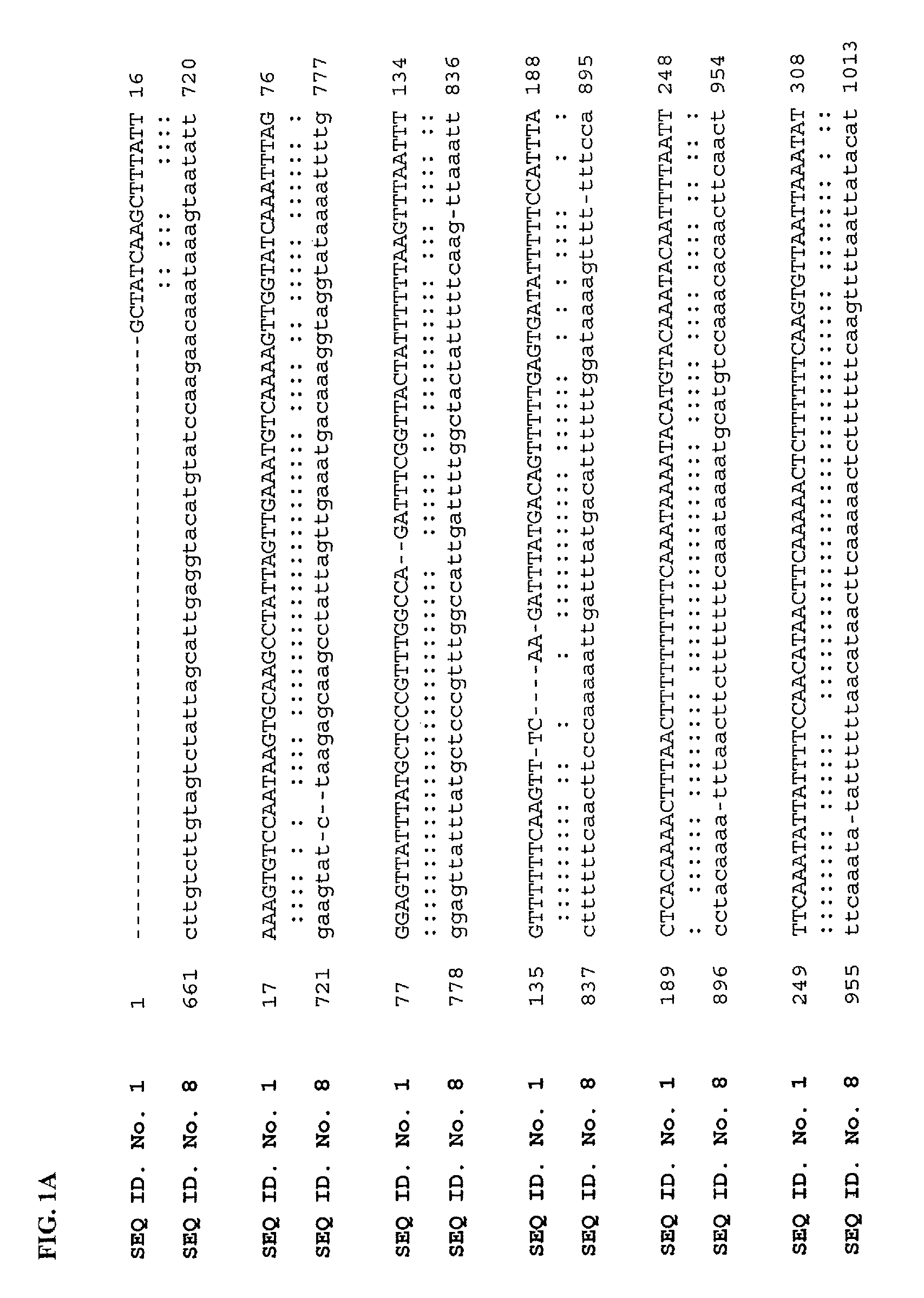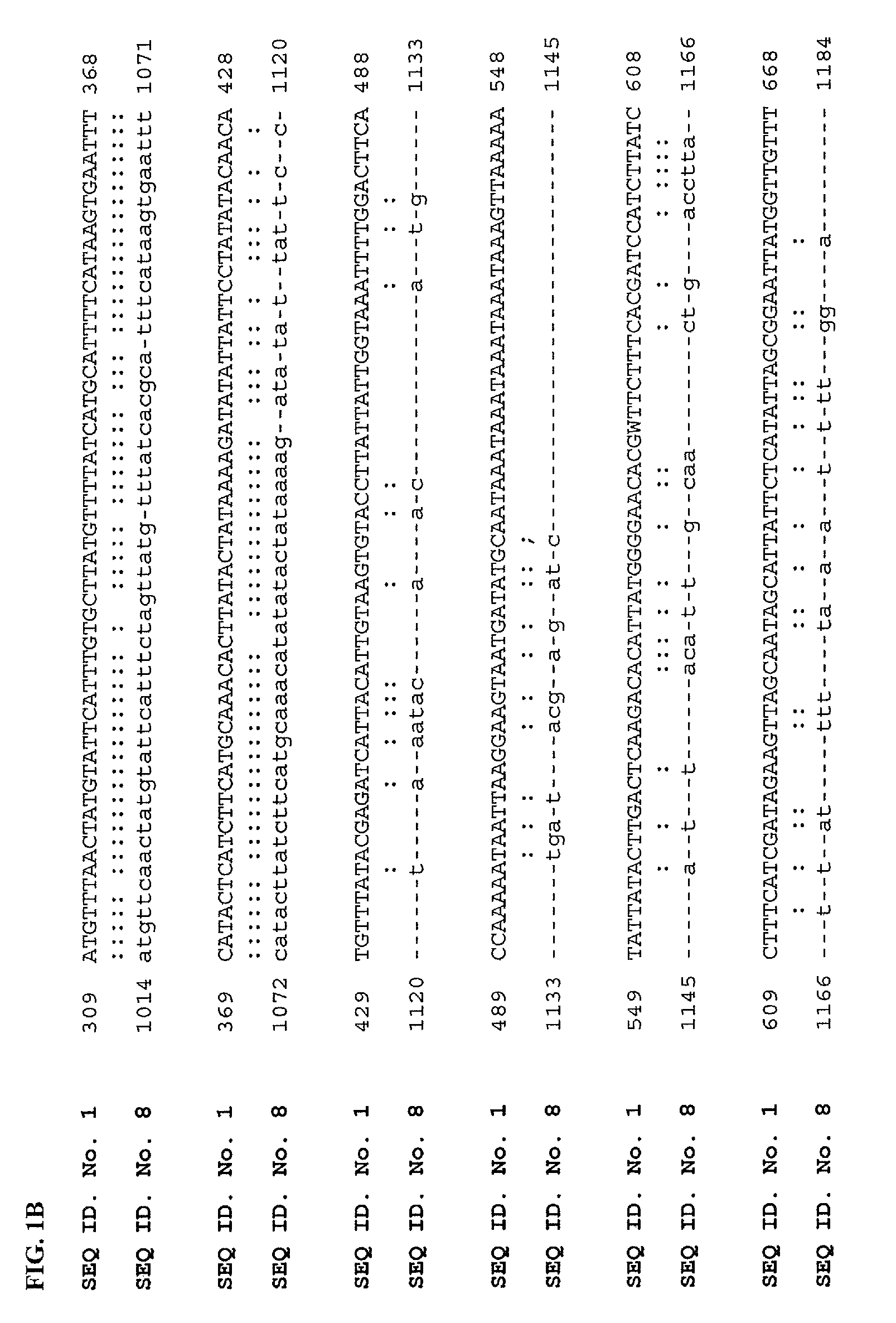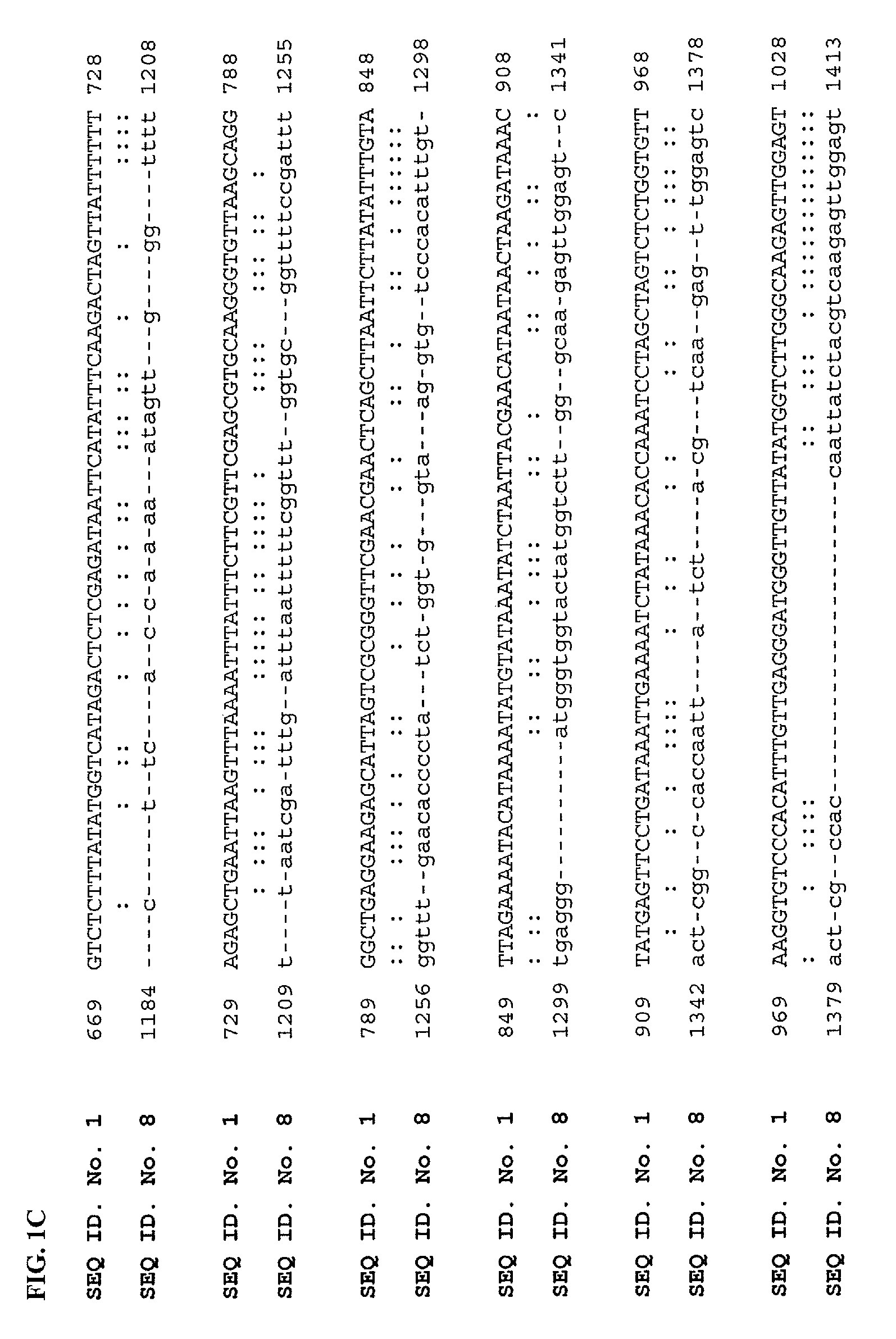Modification of plant development and morphology
a technology applied in the field of plant development and morphology modification, can solve the problems of plant with unusable morphology, other parts of the plant, detrimental metabolic effects, etc., and achieve the effects of preventing or enhancing and reducing the outgrowth of lateral shoots
- Summary
- Abstract
- Description
- Claims
- Application Information
AI Technical Summary
Benefits of technology
Problems solved by technology
Method used
Image
Examples
example 1
Isolation of the ATC 085 Promoter (SEQ ID NO. 7) Region, and Production of Transformation Constructs
[0214]Genomic DNA of tobacco leaf tissue was isolated using the DNAeasy Plant Miniprep Kit (Qiagen) according to the manufacturers' instructions from K326 tobacco leaf material. A 1 μL aliquot of a 1:10 diluted preparation of genomic DNA was used for a primary PCR using 1 μL of a PCR primer S2PCLOFWD (SEQ ID No. 2) at 10 pM / μL and 1 μL of a PCR primer S2PCLOREV (SEQ ID No. 3) at 10 pM / μL in a 25 μL reaction containing 0.5 μL Elongase Taq DNA Polymerase (Gibco BRL), 1 μL Elongase buffer A, 4 μL Elongase buffer B, 1 μL dNTPs at 5 mM each, 15.5 μL double distilled water. The PCR reaction conditions were: an initial cycle at 94° C. for 2 minutes followed by 35 cycles of 94° C. for 30 seconds, 60° C. for 30 seconds and 68° C. for 4 minutes, followed by a final cycle of 68° C. for 10 minutes. The PCR reaction was electrophoresed on a 1.2% agarose TBE gel, containing traces of ethidium bromi...
example 2
Isolation of the ATC 023 Promoter Region and Production of Transformation Construct
[0217]The ATC023 promoter was isolated by PCR from Arabidopsis thaliana (Columbia ecotype) genomic DNA using PfuTurbo DNA Polymerase (Stratagene), and the primers AT4G29190L (SEQ. ID. No. 5) and AT4g29190R (SEQ. ID. No. 6) containing restriction sites for HindIII and BamHI respectively, at an annealing temperature of 63° C. The restriction sites were then used to clone the isolated fragment into the plant transformation vector pBIO1 in front a GUS reporter gene to give the construct pBIO1 023-0101-001. The construct was then transformed into E. coli DH5α.
example 3
Production of Transformed Tobacco Plants
[0218]The constructs produced above were transferred into the Agrobacterium tumefaciens strain LBA4404 and transgenic tobacco var. K326 plants were obtained by in vitro transformation of leaf discs using the co-cultivation method of Horsch et al (1985). Transformed callus and regenerating shoots were selected on MS Agar media containing 100 μg / ml kanamycin and cultured in the presence of Claforan to remove the Agrobacterium cells. Plants were then kept and multiplied in vitro on media without Claforan to confirm absence of Agrobacterium.
[0219]Plants were transferred to soil in the greenhouse for characterisation. The plants showed growth characteristics indistinguishable from the wild type tobacco plant in the greenhouse. PCR analysis was conducted to identify transgenic plants.
[0220]For the production of subsequent generations plants can be selfed and seed collected from mature seed heads and stored at 6° C. Segregation ratios in progeny fro...
PUM
| Property | Measurement | Unit |
|---|---|---|
| temperature | aaaaa | aaaaa |
| pH | aaaaa | aaaaa |
| size | aaaaa | aaaaa |
Abstract
Description
Claims
Application Information
 Login to View More
Login to View More - R&D
- Intellectual Property
- Life Sciences
- Materials
- Tech Scout
- Unparalleled Data Quality
- Higher Quality Content
- 60% Fewer Hallucinations
Browse by: Latest US Patents, China's latest patents, Technical Efficacy Thesaurus, Application Domain, Technology Topic, Popular Technical Reports.
© 2025 PatSnap. All rights reserved.Legal|Privacy policy|Modern Slavery Act Transparency Statement|Sitemap|About US| Contact US: help@patsnap.com



